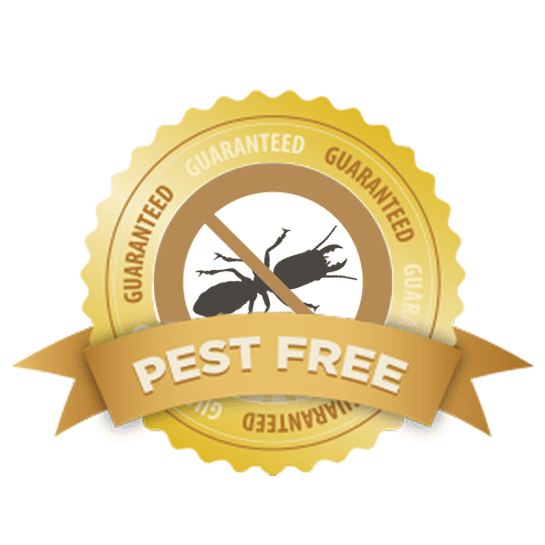A1 Bed Bug Exterminator Charlotte - Reliable and Cost Effective Services
A1 Bed Bug Exterminator Charlotte - Reliable and Cost Effective Services
Blog Article
Bed Insect Treatment Break Down: Comparing Chemical Vs. Non-Chemical Solutions
In the realm of bug control, especially when taking care of the persistent problem of bed pests, the option between chemical and non-chemical treatment options can be a crucial one. Both methods provide unique benefits and downsides, affecting elements such as efficiency, security considerations, and total cost. By examining the nuanced information of each method, a clearer understanding of which course to go after in resolving a bed insect invasion can be acquired.
Effectiveness of Chemical Treatments
Chemical treatments for bed bug infestations have actually been extensively identified for their rapid and potent efficiency in getting rid of these pests. When considering the performance of chemical therapies, it is essential to understand that they can offer a fast and detailed solution to a bed bug problem. Professional pest control operators commonly rely upon pesticides to target bed insects at different stages of their life cycle, including eggs, grownups, and nymphs. These chemicals typically function by interfering with the bed bugs' nerves, causing paralysis and eventual fatality.
In addition, chemical treatments have the advantage of using residual results, indicating that they can remain to remove bed bugs also after the preliminary application. This recurring action is specifically advantageous in combating any type of prospective re-infestations. Furthermore, the quick action of chemical therapies can bring alleviation to people encountering severe bed insect problems, permitting them to regain control of their living rooms quickly.
Safety And Security Worry About Chemical Solutions
One critical element that requires cautious consideration when utilizing chemical remedies for bed pest treatment is ensuring the safety and security of residents and the environment. Direct exposure to specific chemicals used in bed pest treatments can lead to breathing issues, skin irritability, or other damaging reactions, particularly in people with pre-existing problems or sensitivities.
Moreover, the ecological influence of chemical options is another considerable factor to consider. Some pesticides made use of in bed bug treatments might be dangerous to helpful bugs, wildlife, and ecosystems if they leach right into the soil or water supply. It is necessary to utilize chemical therapies deliberately, complying with safety guidelines, and taking into consideration much less poisonous alternatives to mitigate these dangers and ensure the risk-free and reliable administration of bed insect invasions.
Advantages of Non-Chemical Methods
Thinking about the prospective security problems and ecological impact related to chemical solutions for bed bug treatment, checking out non-chemical approaches presents a promising alternative with a number of unique advantages. Non-chemical approaches supply a more secure alternative for families, particularly those with kids, people, or animals sensitive to extreme chemicals. These methods eliminate the threats of direct exposure to hazardous materials, lowering the capacity for negative health and wellness effects. Additionally, non-chemical treatments are eco-friendly, as they do not add to air or water pollution, making them a sustainable selection for bug control.
In addition, non-chemical services can be reliable in targeting bed bugs, including hard-to-reach locations where chemical treatments might not pass through - A1 pest control charlotte nc bed bugs. Techniques such as warmth treatment, vacuuming, steam cleaning, and mattress coverings give comprehensive obliteration without the usage of unsafe chemicals.
Limitations of Non-Chemical Treatments

Additionally, non-chemical treatments often need multiple applications to achieve effective removal. This can be lengthy and might not always guarantee full removal of all bed bugs and their eggs, especially in concealed or hard-to-reach areas.
Additionally, the success of non-chemical company website therapies heavily relies upon correct execution and thoroughness, which can be testing for people without specialist proficiency. Insufficient application of non-chemical approaches may lead More about the author to incomplete obliteration, resulting in persistent infestations and the requirement for additional treatments.
Therefore, while non-chemical therapies have their benefits, it is crucial to acknowledge these restrictions and consider them when identifying one of the most efficient approach for taking care of bed bug infestations.
Price Comparison: Chemical Vs. Non-Chemical Options
Provided the restrictions connected with non-chemical therapies, an essential element to evaluate in the context of bed bug management is the price comparison in between chemical and non-chemical options. Chemical therapies generally involve the application of insecticides by experts, which can vary from $250 to $900 per space, depending on the intensity of the infestation and the size of the area to be treated. On the other hand, non-chemical therapies like warmth therapy or vapor can be a lot more costly, with costs varying from $1,000 to $6,000 for an entire home. While the preliminary cost of chemical therapies may seem lower, multiple therapies may be called for to totally get rid of the problem, possibly increasing the overall price. On the other hand, non-chemical options may supply a more lasting and environment-friendly option, although they can be cost-prohibitive for some people. Inevitably, when considering the expense of bed pest therapy choices, it is very important to evaluate the upfront expenditures against why not try this out the effectiveness and long-lasting sustainability of the picked method.
Conclusion

Considering the possible security problems and environmental influence associated with chemical solutions for bed pest treatment, exploring non-chemical strategies provides an encouraging alternative with several distinct benefits.Offered the limitations connected with non-chemical treatments, an important facet to assess in the context of bed pest management is the price contrast between chemical and non-chemical options. In comparison, non-chemical therapies like warm treatment or vapor can be much more expensive, with costs ranging from $1,000 to $6,000 for an entire home. While the first cost of chemical therapies may seem reduced, numerous treatments may be required to completely remove the problem, potentially increasing the total expense.In verdict, when contrasting chemical and non-chemical bed bug treatment alternatives, it is vital to take into consideration effectiveness, security, advantages, limitations, and price.
Report this page